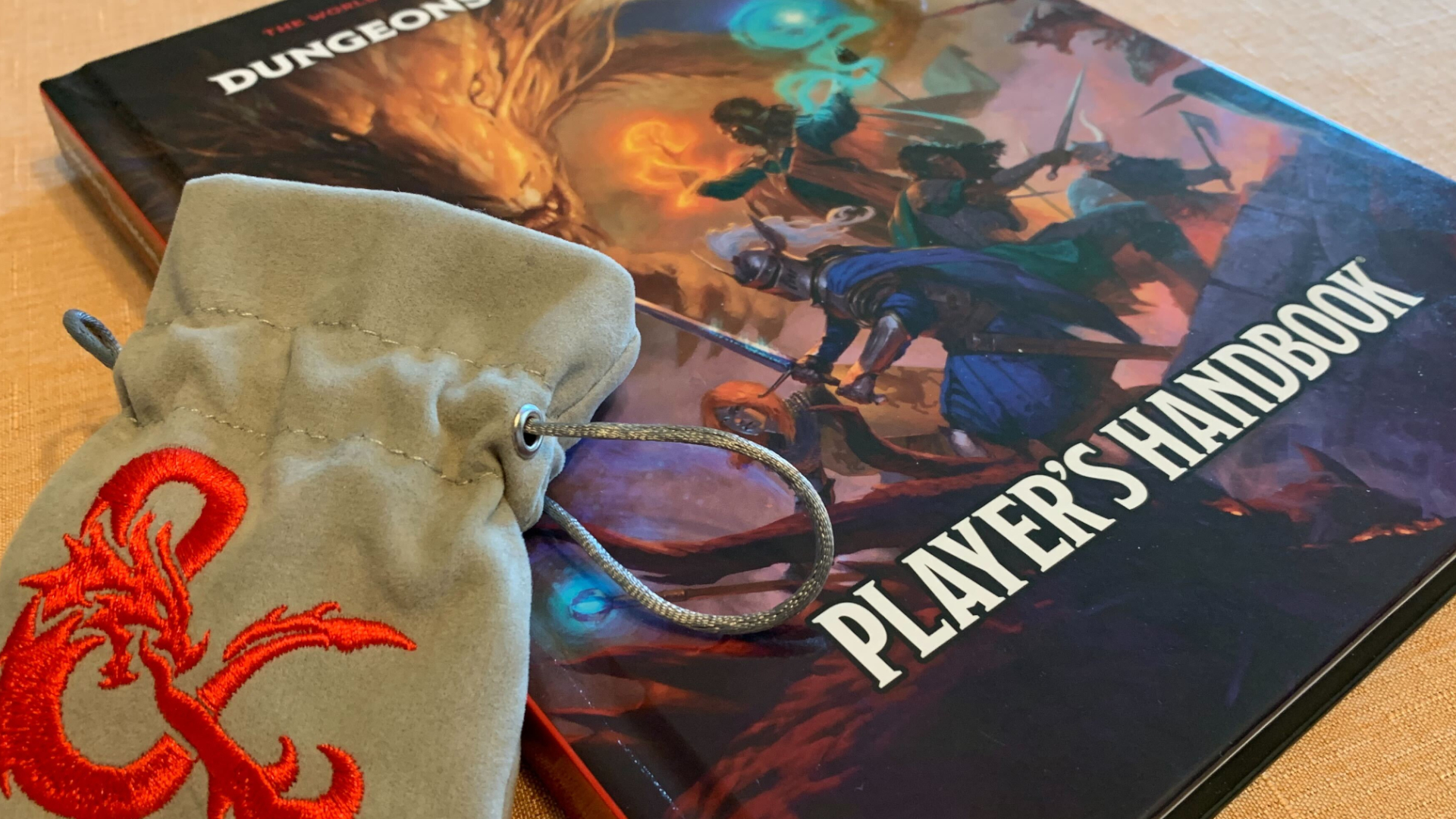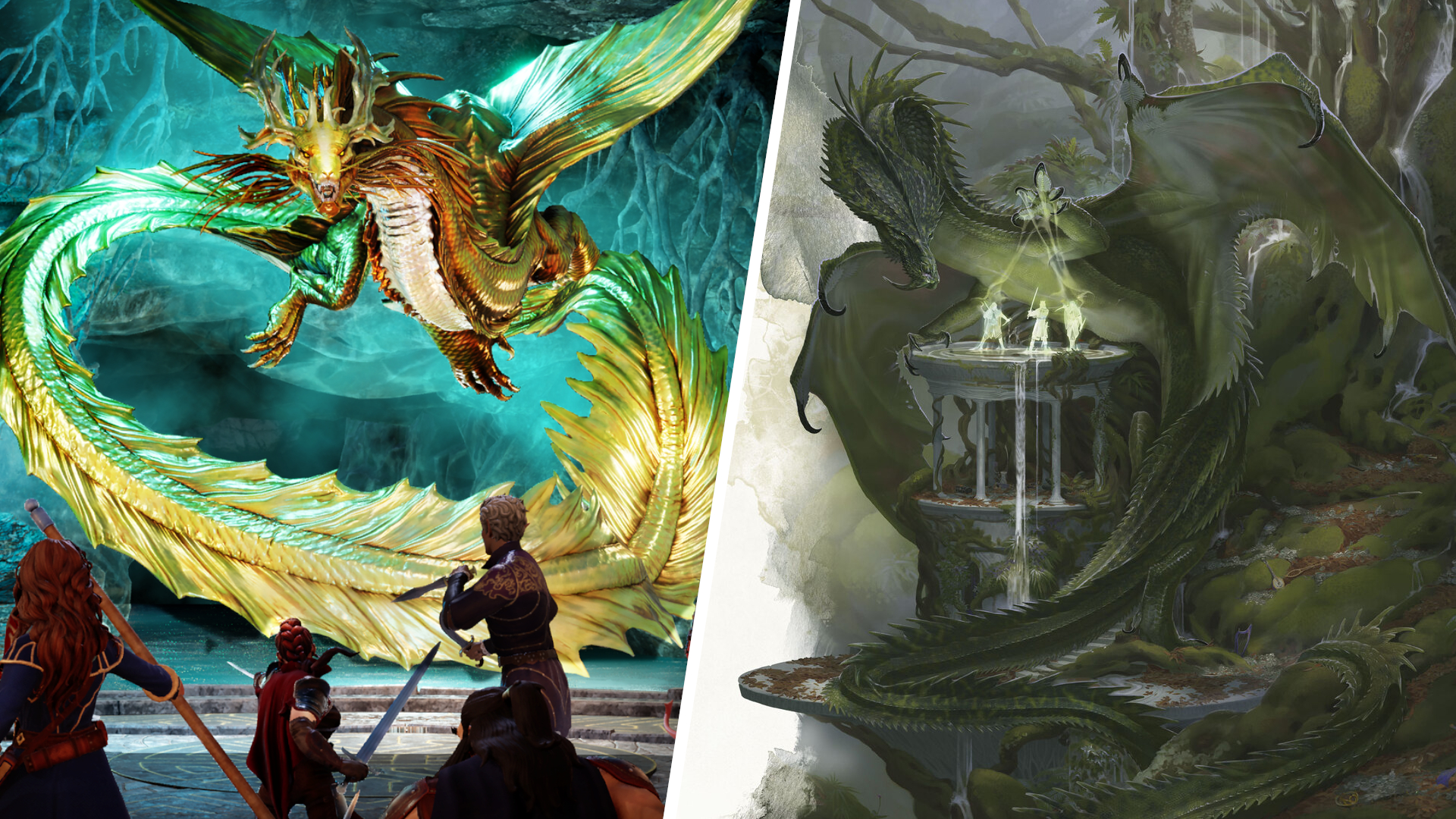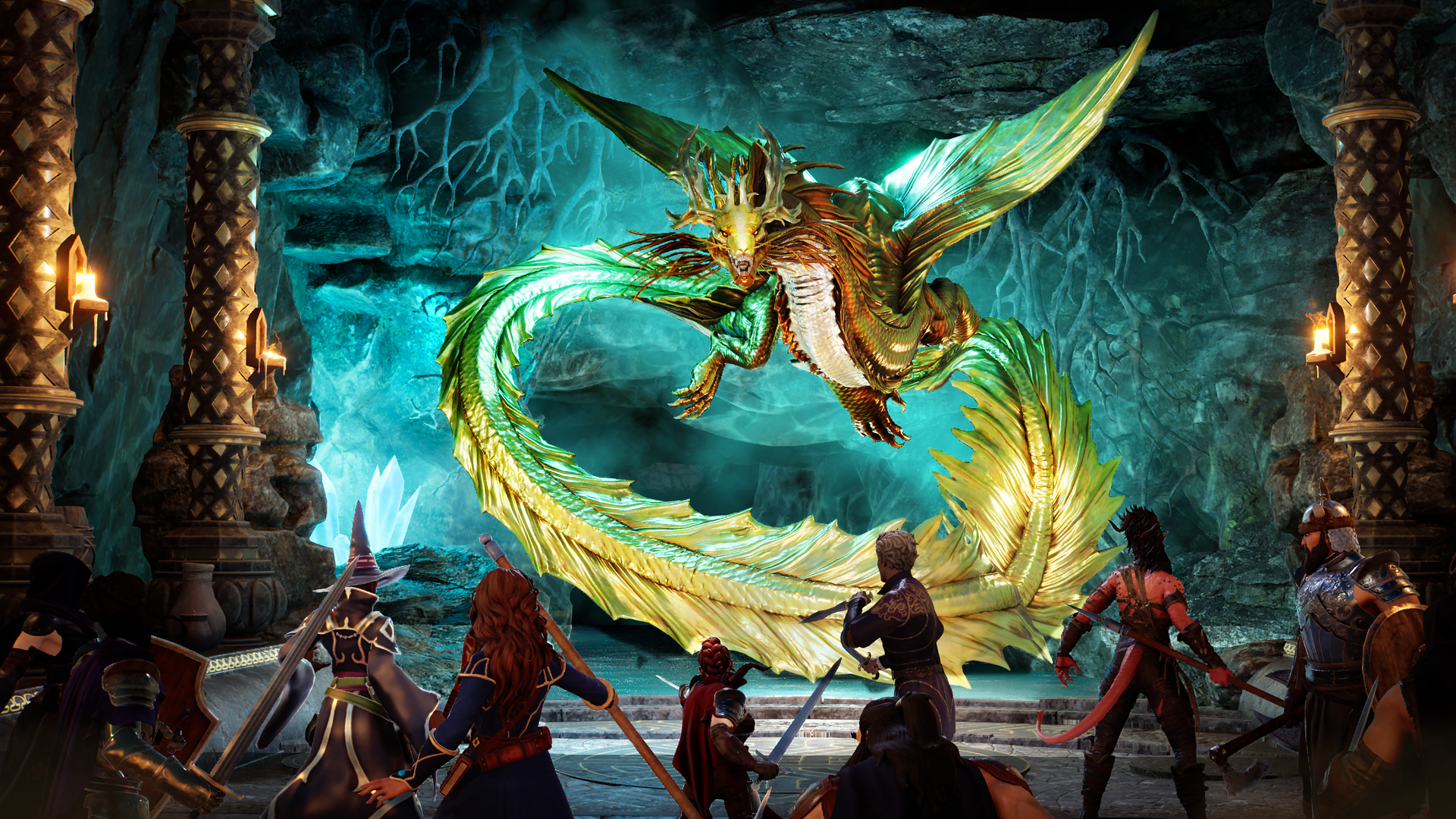Project Sigil is "the Minecraft of D&D" according to developers
Interview | The team behind D&D's new virtual tabletop explains all

The trickiest thing about D&D Project Sigil is describing it. Is this a video game? No – but thanks to flashy Unreal Engine graphics that are reminiscent of Baldur's Gate 3, you'd be forgiven for assuming so. What about a virtual tabletop like Roll20, then? Sort of. It can help you visualize everything from your character's position in combat to the exact layout of a dungeon, but we can already do all that with the official D&D Beyond 'Maps' system. According to the developers, Project Sigil isn't trying to steal its thunder.
So, this begs the question: what the hell is D&D Project Sigil?
"It's a 3D sandbox where you get to play with your favorite franchises as tabletop role playing games, board games, toy battlers, whatever you want," head of Project Sigil Chris Cao tells us when we catch up at Gen Con 2024. "It's a place to play with toys, to play with stories… the elevator pitch might be the Minecraft of D&D, or Roblox for tabletop gaming."
"This separates us from a traditional [virtual tabletop], which is like that 2D puck experience," adds game director Kale Stutzman, referencing the top-down grid-and-token system fans of the best tabletop RPGs will be used to by now.
Essentially, Project Sigil is a toybox.
"My response, now that I'm listening to it, sounds really general," Cao admits. "But the reason we wanted to frame it that way is because D&D is at the center of it. We automate the rules, we put a lot of the classes in, but TRPGs and just hanging out playing is so open ended, that we needed to make sure we did the toys really well, the world really well, and controls really simply, because players are going to take that and run with it."
Compliment, not substitute

Announced back in August 2022, Project Sigil has always been ambitious. Recreating everything from tombs to kobold warbands with eye-popping visuals, it allows you to populate your adventures with fully-3D assets. You can also create your own maps thanks to an inbuilt system that feels like a cross between The Sims and Diablo's old level editor. You can apparently import them from elsewhere, too – the best D&D books, say.
Sign up to the GamesRadar+ Newsletter
Weekly digests, tales from the communities you love, and more
However, the team is very clear on one thing: Project Sigil isn't, and never wanted to be, a video game.
"It's a trap, right?" Stutzman explains. "Where you go, like, oh, we'll make the characters walk around. We'll do all these other things. That stuff is actually killing the imagination. Whereas if you can have just a little miniature, you can imagine it doing anything. It's really like playing with toys for adults, instead of a video game where you have to make [every animation like] climbing a ladder… It's cooler to have it be this blend of imagination plus realization."
"The reason we use [the term] '3D sandbox' is because a lot of different things are going to happen," agrees Cao. "So for us, it's less about the simulation, as it is [about] expression."

Project Sigil isn't the only change coming to the long-running tabletop RPG; this year also sees new core rulebooks hitting shelves with tweaks across the board. We caught up with D&D creative director Chris Perkins at Gen Con 2024 about how the team "didn't burn the game down and build a new game on top of it" in spite of those revisions.
In other words, think of Project Sigil as a 3D version of the terrain or models you'd find at your local hobby store. That's why its tokens don't have animations or voiceovers, even if you can use Baldur's Gate 3 characters; they are supposed to be digital toys. Yes, your spells may have all sorts of pizazz you wouldn't get if you were throwing down Reaper Bones figures on Dwarven Forge scenery. Foes will explode in dazzling light when using 'fireball' on them, for example. But fundamentally, it's a way of enhancing the experience you'd get in-person – or improving the classic 2D virtual tabletop.
"This is the next level of it, right?" Stutzman says. "It's immersive. You feel like you're actually picking up the pieces and moving them around, which really helps connect you with the experience. We don't want it to be like a spreadsheet where you have your combat."
With that in mind, and considering how Astarion et al are available in Project Sigil, can we pull other content – such as environments or specific character models – from games such as Baldur's Gate 3? Not quite.
"I want to be careful not to set the wrong expectations," says Cao, who stresses that the goal is to "complement" other franchises rather than replace them.. "Those models that you saw there [Asatarion and Karlach] go directly off the Larian models, because they're so core to what D&D is. But we interpreted [them differently]. The hair was different, so that they felt more like toys."
Do and be anything

Being a 'complement' rather than a pure D&D vehicle is something else Cao and Stutzman keep circling back to. In their minds, Project Sigil is almost a platform. Stutzman points to HeroQuest, another Hasbro game, as a case in point.
"I took a picture of the map, put it in, and was like, well, it's not actualized, we'll have to just roll the dice," he says. "And we can use the [Project Sigil] hit points to track hit points. And so you just use those tools to play this other game. The D&D one will be the most streamlined, right? That's so that people can come from Baldur's Gate 3 and be like, I don't even really know how to play. And they'll come in and they'll have something that's all sort of ready to go. But if you're already playing pen and paper, any RPG, you could play that. All you need is dice and your character sheet for whatever RPG you're playing. So as we started to open our minds about it, we're like, well, this could do anything."
This is where the ability to mod characters, maps, and more came from. "We are the easy way for you to play with those toys," Cao says. "But if you want to go mod and customize and add the Baldur's Gate 3 experience, that's on you."

A better look at Project Sigil was just one of many reveals for Dungeons & Dragons at the year's biggest tabletop event, and you can catch up with our guide to all the D&D announcements from Gen Con 2024.
Still, a modifiable system has its drawbacks – something I suppose you could charmingly call 'time to penis.' When you give the community the tools to do what they will, oh boy, will they. How is Project Sigil going to handle moderation and community safety? At the moment, it's still a work in progress, but the matter is definitely on the team's mind.
"We think about it in a couple of different ways," says Cao. "So the first way is, you invite your friends with a room code. And actually, we don't have in-game video or chat because people are already using Discord or whatever they want. And so we actually don't want to make everybody sign up for another account. If players want it, great, we'll put it in. But really the point is, you're at a table with people you know… D&D is a very vulnerable experience. You're sharing who you are, you're being daring. It's such a trust-based environment already. We want to make sure that our core experience is that.
"When you say user-generated content, yes, someone can make a bad-looking dungeon as a joke to their friends, but it'll be to their friends, right? The part we're working on now is how to share these things and what that means to share text and pictures. And honestly, that's actually one of the bigger challenges. It's not the tech of sharing, it's actually making sure to do so in an appropriate way. We don't have that solved. But we're telling everybody sharing D&D is D&D. So how do we do that? We don't have an answer yet. But we know that's what we're building it to do."
Gathering inspiration

Something else on the Project Sigil team's mind is how to transfer the core experience of D&D from table to screen. So many try and fail to carry across that special 'something' in-person Dungeons & Dragons has, and to avoid this hurdle, they've taken some inspiration from Magic: The Gathering Arena – which Cao actually worked on. A lot of thought is going into what makes a 'legitimate' D&D experience as a result. Whereas Arena is all about safeguarding the legitimacy of the cards and their rules, those behind Project Sigil think freedom is more important for D&D.
"We actually don't want to enforce the rules as much as people think," Cao tells us. "You can dynamically change names, stats, whatever, because there's a social contract between D&D players, which is if you're cheating, you're pissing off your friends, right? It costs something.
"A lot of players are actually asking us, do you have options to turn [rules] on and off? Are the rules going to be enforced? We're going to do the ones that matter most, and Initiative is a big one, because when you have 12 kobolds in there, oh Lord, it gets really tricky. But we're doing it by what matters most. What's fun for most people? The 'legitimacy' for us is, are you in control?"

Stutzman also points out that D&D is more "malleable" than Magic – rules don't make something 'feel' like Dungeons & Dragons, and he uses Baldur's Gate 3 as proof. Even though the video game uses modified rules that are pretty far removed from their inspiration, it's still widely praised for capturing what a session of D&D feels like.
"I think the greatest thing [developer Larian] did was they made the rules simpler, without making you feel like you weren't playing D&D anymore, or you weren't playing Fifth Edition anymore," he says. "People think they're playing Fifth Edition. It's very different. So that's a different worldview to Magic players. Magic players are like, the card is the card."
It remains to be seen whether that will translate to the final product, and we've got a while to wait until we can find out, as Project Sigil is going into a closed beta this fall. But what does Cao hope fans get from it? Simple – that this is "just D&D. There's rightly a lot of fears and apprehension around this, because [people think] it's a video game… This is just D&D. I know that sounds really simple. But if people can take that away, then they'll understand. It's optional. We don't want to change anything, because we're D&D players first, game-makers second."
Want something new to try on games night? Don't miss our guide to the best board games and the best card games.

I've been writing about games in one form or another since 2012, and now manage GamesRadar+'s tabletop gaming and toy coverage. You'll find my grubby paws on everything from board game reviews to the latest Lego news.
- Rollin BishopUS Managing Editor


